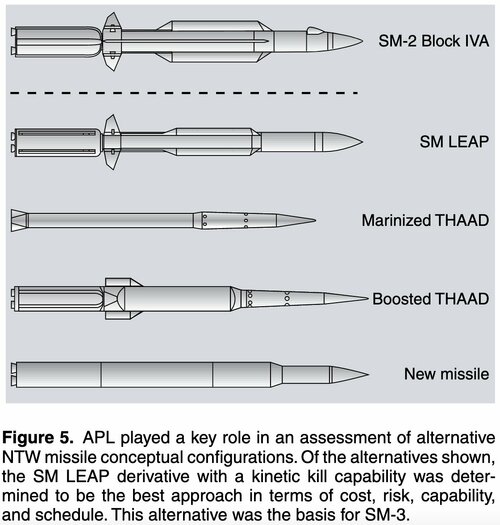You are using an out of date browser. It may not display this or other websites correctly.
You should upgrade or use an alternative browser.
You should upgrade or use an alternative browser.
Patriot SAM replacement
isayyo2
Lurker alert
- Joined
- 24 November 2011
- Messages
- 1,131
- Reaction score
- 2,331
Hopefully the quotes weren't taken out of context...Notice he said nothing about replacing them.
- Joined
- 3 June 2011
- Messages
- 18,344
- Reaction score
- 12,261
Wouldn't be the first time you'd have a general/admiral argueing for the retirement of a system with no replacement on the horizon. (See Ticonderoga class.)Hopefully the quotes weren't taken out of context...Notice he said nothing about replacing them.
bring_it_on
I really should change my personal text
- Joined
- 4 July 2013
- Messages
- 3,677
- Reaction score
- 3,857
There are a few elements on the PATRIOT that are untouched. LTAMDS is completely new and not an upgrade of the existing radar. IBCS is brand new and just going into IOT&E this month and about to enter service. MSE got fielded a few years ago and a new interceptor program is being slowly set up. I believe the new WMI is also begin to be transitioned over to operational units (or about to). IFCN with its better than 150 km range is something that doesn't even exist as a capability (to the best of my knowledge) at the moment so is going to be a completely new capability to the Army. Plus the Army is adding SM-6's to its inventory which opens up interesting future opportunities of using other Mk41 capable interceptors. The only element they haven't modernized is the launcher which even the Army's AOA from back in 2015 said that they need to get at eventually.
What the Army needs isn't a PATRIOT replacement but a full fledged doctrinal shift to the composite AD units since individual systems are far less relevant now with IBCS on the verge of being fielded. Mix and match MSE with THAAD radar, THAAD radar with PATRIOT, IFPC and PATRIOT and even USMC sensors/shooters (G/ATOR etc). This was what stood out to me in talk that Brig. Gen Gibson gave yesterday. While this was just a dream earlier with stovepiped and disparate systems..all of them now being on IBCS and IFCN really allows the Army to begin to create these composite units combining elements of various systems to best meet given theater needs. Much more efficient and effective.
The first PATRIOT battalion that gets equipped with IAMD (IBCS). and LTAMDS might as well be a completely new system from the original PATRIOT air defense system. In fact most programs will call that a new Air Defense system like the Soviet/Russian S-XXX designation.
What the Army needs isn't a PATRIOT replacement but a full fledged doctrinal shift to the composite AD units since individual systems are far less relevant now with IBCS on the verge of being fielded. Mix and match MSE with THAAD radar, THAAD radar with PATRIOT, IFPC and PATRIOT and even USMC sensors/shooters (G/ATOR etc). This was what stood out to me in talk that Brig. Gen Gibson gave yesterday. While this was just a dream earlier with stovepiped and disparate systems..all of them now being on IBCS and IFCN really allows the Army to begin to create these composite units combining elements of various systems to best meet given theater needs. Much more efficient and effective.
The first PATRIOT battalion that gets equipped with IAMD (IBCS). and LTAMDS might as well be a completely new system from the original PATRIOT air defense system. In fact most programs will call that a new Air Defense system like the Soviet/Russian S-XXX designation.
Last edited:
bring_it_on
I really should change my personal text
- Joined
- 4 July 2013
- Messages
- 3,677
- Reaction score
- 3,857
Stinger with PF is out in the field. Army has also started a search for a Stinger replacement.
 aviationweek.com
aviationweek.com
U.S. Army Opens 5-Year Search For Stinger Missile Replacement | Aviation Week Network
The sources sought notice asked interested companies to supply a wide range of information, such as a rough order of magnitude estimate for the cost and schedule of developing and delivering up 8,000 missiles.
Last edited:
- Joined
- 11 February 2007
- Messages
- 2,571
- Reaction score
- 4,383
In fact most programs will call that a new Air Defense system like the Soviet/Russian S-XXX designation.
Russia's replaced the missile element of S-300 at least twice, and radars once, while still calling it S-300. What Russia has been doing, but the US seems to have gotten away from, is distinctively designating variants, so we've had:
S-300P, PT, PT-1, PS, PMU, F, FM, V, VM, PMU-1, PMU-2
- Joined
- 3 June 2011
- Messages
- 18,344
- Reaction score
- 12,261
V and VM are completely different systems from the S-300/400 line. Almost like calling Aegis, "Patriot B" or something.In fact most programs will call that a new Air Defense system like the Soviet/Russian S-XXX designation.
Russia's replaced the missile element of S-300 at least twice, and radars once, while still calling it S-300. What Russia has been doing, but the US seems to have gotten away from, is distinctively designating variants, so we've had:
S-300P, PT, PT-1, PS, PMU, F, FM, V, VM, PMU-1, PMU-2
- Joined
- 11 February 2007
- Messages
- 2,571
- Reaction score
- 4,383
V and VM are completely different systems from the S-300/400 line. Almost like calling Aegis, "Patriot B" or something.
Absolutely, but it does demonstrate just how widely Russia is willing to stretch the S-XXX labels.
bring_it_on
I really should change my personal text
- Joined
- 4 July 2013
- Messages
- 3,677
- Reaction score
- 3,857
In fact most programs will call that a new Air Defense system like the Soviet/Russian S-XXX designation.
Russia's replaced the missile element of S-300 at least twice, and radars once, while still calling it S-300. What Russia has been doing, but the US seems to have gotten away from, is distinctively designating variants, so we've had:
S-300P, PT, PT-1, PS, PMU, F, FM, V, VM, PMU-1, PMU-2
PAC-1, PAC-2, PAC-2/GEM, PAC-3 and MSE. Now they are getting the Mid Range Capability and SM-6 which will also (most probably) live on IFCN. Then there is the newly launched Future interceptor (LTFI). Several hardware and software upgrades to the two radars. And now a 360 degree non rotating Gallium Nitride based AESA. On the Command and control side, they're basically going all in on IAMD with IFCN basically making launcher, shooter and sensor agnostic choices possible with both Sentinal A3 (and A4), Marine G/ATOR, and LTAMDS integrated even before IAMD is declared operational. IFCN as a network is something that probably didn't even exist as a concept when PATRIOT was developed. So if they really had competition (in the western market) they would have probably started calling it PATRIOT NG or something like that long ago. Instead, we are talking about designations, and PDB's which no one really knows in the general public.
The headline that we need to replace PATRIOT is rather misleading but my sense is that this is already happening. PATRIOT's replacement is not another air-defense system that one can point to but the IAMD program. Having formally put it out there (along with the integrated fire control network) as the basis for all current and future systems, they won't need to develop whole new systems in the future. It will be just be radars, missiles and launchers all part of the same IBCS and IFCN collection being added or removed based on need. They are headed towards these composite units IMHO so no single system will be required making upgrades much easier (see how quickly they're moving on LTAMDS and MRC). Virtually the only legacy component left on a IAMD converted PATRIOT air defense system is the launcher. An all MSE LTAMDS and IAMD equipped system with the new interface and IFCN is virtually a completely new system with a very cutting edge radar, a highly capable BMD Lower tier interceptor and an ability to plug into other more capable radars, missiles, and sensors.
Last edited:
- Joined
- 11 February 2007
- Messages
- 2,571
- Reaction score
- 4,383
In fact most programs will call that a new Air Defense system like the Soviet/Russian S-XXX designation.
Russia's replaced the missile element of S-300 at least twice, and radars once, while still calling it S-300. What Russia has been doing, but the US seems to have gotten away from, is distinctively designating variants, so we've had:
S-300P, PT, PT-1, PS, PMU, F, FM, V, VM, PMU-1, PMU-2
PAC-1, PAC-2, PAC-2/GEM, PAC-3 and MSE.
But that's the missile element, rather than the complete battery, what the Russians would call a complex, which has just kept the Patriot name. In parallel with introducing the new missiles and radars, the Russians updated the designation of the complete S-300 complex, but the US has just left it at 'Patriot', which obscures how much the system has evolved over the years.
- Joined
- 3 June 2011
- Messages
- 18,344
- Reaction score
- 12,261
Hopefully they're not ditching the PAC-2 missile. They still need a long range missile and I doubt SM-6 will ever be affordable enough to buy in large numbers.In fact most programs will call that a new Air Defense system like the Soviet/Russian S-XXX designation.
Russia's replaced the missile element of S-300 at least twice, and radars once, while still calling it S-300. What Russia has been doing, but the US seems to have gotten away from, is distinctively designating variants, so we've had:
S-300P, PT, PT-1, PS, PMU, F, FM, V, VM, PMU-1, PMU-2
PAC-1, PAC-2, PAC-2/GEM, PAC-3 and MSE. Now they are getting the Mid Range Capability and SM-6 which will also (most probably) live on IFCN. Then there is the newly launched Future interceptor (LTFI). Several hardware and software upgrades to the two radars. And now a 360 degree non rotating Gallium Nitride based AESA. On the Command and control side, they're basically going all in on IAMD with IFCN basically making launcher, shooter and sensor agnostic choices possible with both Sentinal A3 (and A4), Marine G/ATOR, and LTAMDS integrated even before IAMD is declared operational. IFCN as a network is something that probably didn't even exist as a concept when PATRIOT was developed. So if they really had competition (in the western market) they would have probably started calling it PATRIOT NG or something like that long ago. Instead, we are talking about designations, and PDB's which no one really knows in the general public.
The headline that we need to replace PATRIOT is rather misleading but my sense is that this is already happening. PATRIOT's replacement is not another air-defense system that one can point to but the IAMD program. Having formally put it out there (along with the integrated fire control network) as the basis for all current and future systems, they won't need to develop whole new systems in the future. It will be just be radars, missiles and launchers all part of the same IBCS and IFCN collection being added or removed based on need. They are headed towards these composite units IMHO so no single system will be required making upgrades much easier (see how quickly they're moving on LTAMDS and MRC). Virtually the only legacy component left on a IAMD converted PATRIOT air defense system is the launcher. An all MSE LTAMDS and IAMD equipped system with the new interface and IFCN is virtually a completely new system with a very cutting edge radar, a highly capable BMD Lower tier interceptor and an ability to plug into other more capable radars, missiles, and sensors.
What is the cost of a PAC-2 vs. SM-6?Hopefully they're not ditching the PAC-2 missile. They still need a long range missile and I doubt SM-6 will ever be affordable enough to buy in large numbers.In fact most programs will call that a new Air Defense system like the Soviet/Russian S-XXX designation.
Russia's replaced the missile element of S-300 at least twice, and radars once, while still calling it S-300. What Russia has been doing, but the US seems to have gotten away from, is distinctively designating variants, so we've had:
S-300P, PT, PT-1, PS, PMU, F, FM, V, VM, PMU-1, PMU-2
PAC-1, PAC-2, PAC-2/GEM, PAC-3 and MSE. Now they are getting the Mid Range Capability and SM-6 which will also (most probably) live on IFCN. Then there is the newly launched Future interceptor (LTFI). Several hardware and software upgrades to the two radars. And now a 360 degree non rotating Gallium Nitride based AESA. On the Command and control side, they're basically going all in on IAMD with IFCN basically making launcher, shooter and sensor agnostic choices possible with both Sentinal A3 (and A4), Marine G/ATOR, and LTAMDS integrated even before IAMD is declared operational. IFCN as a network is something that probably didn't even exist as a concept when PATRIOT was developed. So if they really had competition (in the western market) they would have probably started calling it PATRIOT NG or something like that long ago. Instead, we are talking about designations, and PDB's which no one really knows in the general public.
The headline that we need to replace PATRIOT is rather misleading but my sense is that this is already happening. PATRIOT's replacement is not another air-defense system that one can point to but the IAMD program. Having formally put it out there (along with the integrated fire control network) as the basis for all current and future systems, they won't need to develop whole new systems in the future. It will be just be radars, missiles and launchers all part of the same IBCS and IFCN collection being added or removed based on need. They are headed towards these composite units IMHO so no single system will be required making upgrades much easier (see how quickly they're moving on LTAMDS and MRC). Virtually the only legacy component left on a IAMD converted PATRIOT air defense system is the launcher. An all MSE LTAMDS and IAMD equipped system with the new interface and IFCN is virtually a completely new system with a very cutting edge radar, a highly capable BMD Lower tier interceptor and an ability to plug into other more capable radars, missiles, and sensors.
bring_it_on
I really should change my personal text
- Joined
- 4 July 2013
- Messages
- 3,677
- Reaction score
- 3,857
In fact most programs will call that a new Air Defense system like the Soviet/Russian S-XXX designation.
Russia's replaced the missile element of S-300 at least twice, and radars once, while still calling it S-300. What Russia has been doing, but the US seems to have gotten away from, is distinctively designating variants, so we've had:
S-300P, PT, PT-1, PS, PMU, F, FM, V, VM, PMU-1, PMU-2
PAC-1, PAC-2, PAC-2/GEM, PAC-3 and MSE.
But that's the missile element, rather than the complete battery, what the Russians would call a complex, which has just kept the Patriot name. In parallel with introducing the new missiles and radars, the Russians updated the designation of the complete S-300 complex, but the US has just left it at 'Patriot', which obscures how much the system has evolved over the years.
Yes exactly. This was my point. Just like the Standard Missile is the Standard Missile
bring_it_on
I really should change my personal text
- Joined
- 4 July 2013
- Messages
- 3,677
- Reaction score
- 3,857
Hopefully they're not ditching the PAC-2 missile. They still need a long range missile and I doubt SM-6 will ever be affordable enough to buy in large numbers.
For now yes. I remember initially the Army didn't want to integrate PAC-2 family into LTAMDS but soon reversed that decision. There is a large inventory of PAC-2's so they'll be around for a while until the Lower Tier Future Interceptor program picks pace and looks at the more advanced threats. We'll probably begin to see a lot more pure MSE launchers though as that missile proliferates in the Army but they aren't buying them at the scale required for a wholesale replacement not to mention that you probably don't want to use a $4+ Million missile at anything besides the most advanced BMD threat. If the integrate the MK41 kitted MRC launchers into IFCN (they've hinted at using SM-6 in a defense role as well) then that gives them interesting options going forward. Should also help reduce SM-6 cost if the Army and FMS (Australia and Japan are interested) begin to buy it.
- Joined
- 3 June 2011
- Messages
- 18,344
- Reaction score
- 12,261
There is a large inventory of PAC-2's so they'll be around for a while until the Lower Tier Future Interceptor program picks pace and looks at the more advanced threats. We'll probably begin to see a lot more pure MSE launchers though as that missile proliferates in the Army but they aren't buying them at the scale required for a wholesale replacement not to mention that you probably don't want to use a $4+ Million missile at anything besides the most advanced BMD threat.
And then there's the range thing. Published sources give PAC-2/GEM as having 4 - 5 times the range of PAC-3 MSE. Don't want to lose that.
- Joined
- 3 June 2011
- Messages
- 18,344
- Reaction score
- 12,261
It can do any kind of target, pretty much, but you'd want to use that before a PAC-2 against a missile. Something 30 miles away your only choice will be a PAC-2.Isn't the PAC-3 MSE optimised to intercept ballistic missiles?
bring_it_on
I really should change my personal text
- Joined
- 4 July 2013
- Messages
- 3,677
- Reaction score
- 3,857
Isn't the PAC-3 MSE optimised to intercept ballistic missiles?
It is highly effective against that threat but it is capable of defeating all the PATRIOT threats. But at 4+ million you don't want to use it to defeat cruise missiles or shoot down helicopters.
The MSI envelope (TBM's) currently exceeds the capability of the existing PATRIOT radar. This was one of the driving factors for LTAMDS so that the full capability of the MSE can be exploited. However as Sferrin said, since it doesn't loft as high as a legacy PAC-2 it won't get you the theoretical range of a PAC-2 against the slower threats (like cruise missiles or aircraft) even though it can keep out Ballistic Missiles at distances exceeding the PAC-2.
The PAC-2's biggest weakness is that it lacks an active seeker and the small magazine with just four on a launcher. Army will likely pure MSE its batteries in high TBM threat areas for this reason.
- Joined
- 4 July 2010
- Messages
- 2,516
- Reaction score
- 3,097
Well as long as they put plenty of those tables around all their their territory, they're all set.I could get behind a Stinger replacement. Check out this Russian MANPADS:
isayyo2
Lurker alert
- Joined
- 24 November 2011
- Messages
- 1,131
- Reaction score
- 2,331
With the comeback of the Multi-Mission Launcher back into vogue I do hope the Army and ADA continue their "platform agnostic" approach to launchers. If GEM-T is dropped as the news has been saying on and off for years now perhaps the Army should further look at ESSM/SM-2/SM-6 for the layered defense role? Or at the very least refresh their GEMs with active seekers, piggyback off block II ESSM experience? Raytheon wins either wayIf the integrate the MK41 kitted MRC launchers into IFCN (they've hinted at using SM-6 in a defense role as well) then that gives them interesting options going forward. Should also help reduce SM-6 cost if the Army and FMS (Australia and Japan are interested) begin to buy it.
bring_it_on
I really should change my personal text
- Joined
- 4 July 2013
- Messages
- 3,677
- Reaction score
- 3,857
With the comeback of the Multi-Mission Launcher back into vogue I do hope the Army and ADA continue their "platform agnostic" approach to launchers. If GEM-T is dropped as the news has been saying on and off for years now perhaps the Army should further look at ESSM/SM-2/SM-6 for the layered defense role? Or at the very least refresh their GEMs with active seekers, piggyback off block II ESSM experience? Raytheon wins either wayIf the integrate the MK41 kitted MRC launchers into IFCN (they've hinted at using SM-6 in a defense role as well) then that gives them interesting options going forward. Should also help reduce SM-6 cost if the Army and FMS (Australia and Japan are interested) begin to buy it.
They already have that with PATRIOT. PAC-3, PAC-3 MSE and PAC-2 GEM/T all operate off of the same launcher. Raytheon has even proposed adding a Stunner missile to it. ESSM or the SM-2 doesn't provide much value to the Army given the mission set (SM-6 is dual use so is higher value). The biggest problem with adding an active seeker on GEM/T is that one of those missiles takes up as much space as 3 or 4 PAC-3 family missiles. The SM-6 gives them the longer ranged intercepts if they want that with IBCS and JADC2 now being worked on. Beyond this, they really need a Ballistic Missiles interceptor that can fly faster, go farther and higher than the MSE and use the full extent of the LTAMDS capability.
isayyo2
Lurker alert
- Joined
- 24 November 2011
- Messages
- 1,131
- Reaction score
- 2,331
I get that, and totally agree. Only suggesting Navy weapons as a hedge if PAC-2 gets dropped for whatever reason as their re-certification has been a stickler in the past few years. GEM-T seems to be doing some good work against Houthi missiles albeit the article is from 2017 "Of those 100-plus intercepts of Yemen-launched threats, Raytheon executives here credited more than 90 to the firm’s PAC-2 Guided Enhanced Missile-T (GEM-T)"They already have that with PATRIOT. PAC-3, PAC-3 MSE and PAC-2 GEM/T all operate off of the same launcher. Raytheon has even proposed adding a Stunner missile to it. ESSM or the SM-2 doesn't provide much value to the Army given the mission set
Has the Army publicly discussed their SM-6 LRPF having a secondary air defense role?
bring_it_on
I really should change my personal text
- Joined
- 4 July 2013
- Messages
- 3,677
- Reaction score
- 3,857
Has the Army publicly discussed their SM-6 LRPF having a secondary air defense role?
Cryptically so. Lt. General Thurgood reference how with the SM-6 they are getting a missile both capable of offensive and defensive fires, while VADM Hill at the same event Space and Missile defense event also said that SM-6 is easier to launch off of land compared to the SM-3 that is tightly coupled with the SPY-1/6 S band radars. With IFCN and JADC2, you now have a way to target at longer ranges that you really didn't earlier and the Army can pick up this capability for not a lot of money relatively to developing a completely new interceptor and then integrating it in an existing launcher. This allows the future LT interceptor to focus on the ballistic and hypersonic threat and leave the rest to existing inventory missiles.
isayyo2
Lurker alert
- Joined
- 24 November 2011
- Messages
- 1,131
- Reaction score
- 2,331
Neat, thanks for the insight!
Has the Army publicly discussed their SM-6 LRPF having a secondary air defense role?
Cryptically so. Lt. General Thurgood reference how with the SM-6 they are getting a missile both capable of offensive and defensive fires, while VADM Hill at the same event Space and Missile defense event also said that SM-6 is easier to launch off of land compared to the SM-3 that is tightly coupled with the SPY-1/6 S band radars. With IFCN and JADC2, you now have a way to target at longer ranges that you really didn't earlier and the Army can pick up this capability for not a lot of money relatively to developing a completely new interceptor and then integrating it in an existing launcher. This allows the future LT interceptor to focus on the ballistic and hypersonic threat and leave the rest to existing inventory missiles.
- Joined
- 18 May 2019
- Messages
- 640
- Reaction score
- 1,673
I think this numbers from some kind of field manual, PAC 2 and PAC 3 are estimated equal versus air-breathing targetThere is a large inventory of PAC-2's so they'll be around for a while until the Lower Tier Future Interceptor program picks pace and looks at the more advanced threats. We'll probably begin to see a lot more pure MSE launchers though as that missile proliferates in the Army but they aren't buying them at the scale required for a wholesale replacement not to mention that you probably don't want to use a $4+ Million missile at anything besides the most advanced BMD threat.
And then there's the range thing. Published sources give PAC-2/GEM as having 4 - 5 times the range of PAC-3 MSE. Don't want to lose that.
Planning ranges PAC 2 TBM: 20 km ABT: 55 km
Planning ranges PAC 3 TBM: 30 km ABT: 55 km
https://quizlet.com/230618709/patriot-exam-flash-cards/
planning range - 2/3 max range munitions fired under standard conditions
- Joined
- 3 June 2011
- Messages
- 18,344
- Reaction score
- 12,261
"The missile has a range of 70km and a maximum altitude greater than 24km. The minimum flight time is less than nine seconds and the maximum is three and a half minutes."
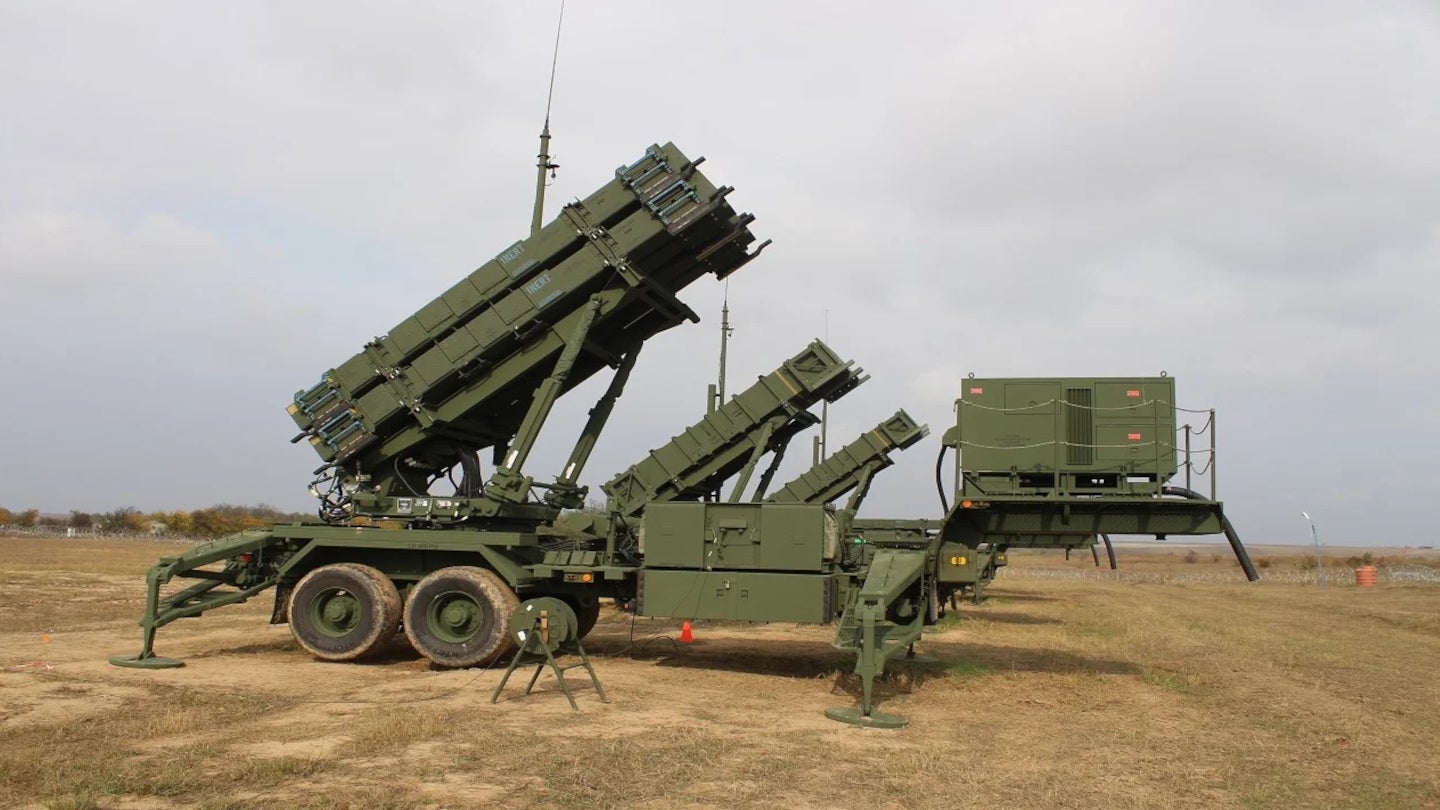
 www.army-technology.com
www.army-technology.com


Patriot Missile Long-Range Air-Defence System, US Army
Patriot is a long-range, all-altitude, all-weather air defence system to counter tactical ballistic missiles, cruise missiles and advanced aircraft.
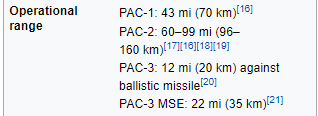
MSE range against certain aircraft might be around 100 km.
My logic stems from the following: PAC-3 was, previously, many years ago, labeled as a 65 or 70 km missile against aircraft in one publication on the NATO website. Sadly, I've no way of finding that document anymore.
And then when MSE came, it was often said that it brings give or take 50% increase in range over PAC3.
Such ranges should absolutely be attainable considering how big those missiles actually are.
My logic stems from the following: PAC-3 was, previously, many years ago, labeled as a 65 or 70 km missile against aircraft in one publication on the NATO website. Sadly, I've no way of finding that document anymore.
And then when MSE came, it was often said that it brings give or take 50% increase in range over PAC3.
Such ranges should absolutely be attainable considering how big those missiles actually are.
bring_it_on
I really should change my personal text
- Joined
- 4 July 2013
- Messages
- 3,677
- Reaction score
- 3,857
Active vs TVM is a consideration here. For TBM targets the PAC-3 MSE actually exceeds the capability of the current PATRIOT radar while the GEM/T does not. When you look into ABT's, your limitations are both kinematic and TVM related when employing the GEM/T system. For MSE/PAC-3 it is likely an altitude limitation for those max range ballistic intercept profiles.
I have seen 150+ km thrown around for the GEM/T against subsonic air-breathing threats but then that assumes that you have LOS for the link. Throw an active seeker on the gem tango and you can probably exceed this beyond the current levels.
I have seen 150+ km thrown around for the GEM/T against subsonic air-breathing threats but then that assumes that you have LOS for the link. Throw an active seeker on the gem tango and you can probably exceed this beyond the current levels.
Just a good ol' Igla, nothing fancy here. Verba is obviously more interesting, still Stinger itself is not a toy.I could get behind a Stinger replacement. Check out this Russian MANPADS:
bring_it_on
I really should change my personal text
- Joined
- 4 July 2013
- Messages
- 3,677
- Reaction score
- 3,857
bring_it_on
I really should change my personal text
- Joined
- 4 July 2013
- Messages
- 3,677
- Reaction score
- 3,857
Funnily enough, this is what my setting is when it comes to air defense. You can't hide from the stupid amounts of sensors being deployed, so all war becomes attritional in the purest sense.
- Joined
- 3 June 2011
- Messages
- 18,344
- Reaction score
- 12,261
Assuming you can actually hit what you can see. Other than that you'll just see the punch coming that knocks you out.Funnily enough, this is what my setting is when it comes to air defense. You can't hide from the stupid amounts of sensors being deployed, so all war becomes attritional in the purest sense.
Funny thing is that it's becoming a situation where you lack sensor data for your weapons instead of the weapons themselves.Assuming you can actually hit what you can see. Other than that you'll just see the punch coming that knocks you out.Funnily enough, this is what my setting is when it comes to air defense. You can't hide from the stupid amounts of sensors being deployed, so all war becomes attritional in the purest sense.
bring_it_on
I really should change my personal text
- Joined
- 4 July 2013
- Messages
- 3,677
- Reaction score
- 3,857
Being able to track something is the first requirement to be able to intercept it. IAMD opens up the aperture significantly and basically transforms the PATRIOT to a local air defense system to one that is a composite of multiple disparate sensors and shooters. Between THAAD, MSE, and the IFPC interceptors there are several really good options to go after some of these threats. Throw in SM-6, and future LT interceptor to the mix as well.
Yes that's currently the case. The current PATRIOT radar cannot realize the entire kinematic capability of the PAC-3 MSE. For Cruise Missile defense, your keep out distance is essentially limited to your ability to track these weapons during cruise using third party ground based or elevated sensors. IAMD has already demonstrated some long range shots made possible by IBCS and forward deployed Sentinels. With IFCN you can now have your launchers positioned to make use of that as opposed to having them bunched up. When the Army fields the SM-6 it will need this connectivity and the integrated fire control network to make use of that weapon to go after threats not in the PATRIOT or LTAMDS radar FOV.
Funny thing is that it's becoming a situation where you lack sensor data for your weapons instead of the weapons themselves.
Yes that's currently the case. The current PATRIOT radar cannot realize the entire kinematic capability of the PAC-3 MSE. For Cruise Missile defense, your keep out distance is essentially limited to your ability to track these weapons during cruise using third party ground based or elevated sensors. IAMD has already demonstrated some long range shots made possible by IBCS and forward deployed Sentinels. With IFCN you can now have your launchers positioned to make use of that as opposed to having them bunched up. When the Army fields the SM-6 it will need this connectivity and the integrated fire control network to make use of that weapon to go after threats not in the PATRIOT or LTAMDS radar FOV.
- Joined
- 3 June 2011
- Messages
- 18,344
- Reaction score
- 12,261
Seems like as good of place as any to put this. (It's probably elsewhere on this site but for the life of me don't know what it would be called.) This missile, second from right. Almost looks like it could be a Mk72 booster with a 21" sized second stage (think SM-6 Block IB) and a THAAD KKV. I wonder if the Navy is looking at something like this.

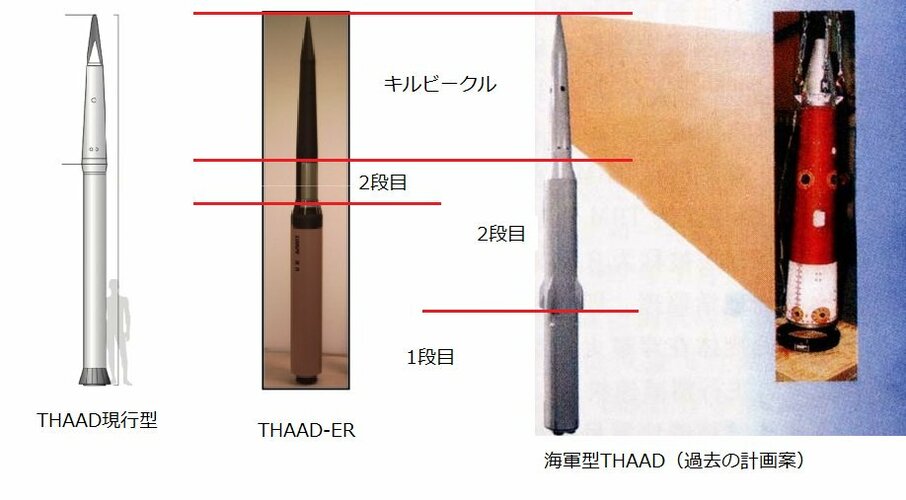
aonestudio
I really should change my personal text
- Joined
- 11 March 2018
- Messages
- 2,965
- Reaction score
- 7,495

Fast Forward: U.S. Army Accelerates Delivery of Sentinel A4 Missile Defense Radar
SYRACUSE, NY, Oct. 11, 2021 - The U.S. Army Sentinel A4 Program Office provided an accelerated contract award to Lockheed Martin (NYSE:LMT) to begin production for five additional radar systems ...
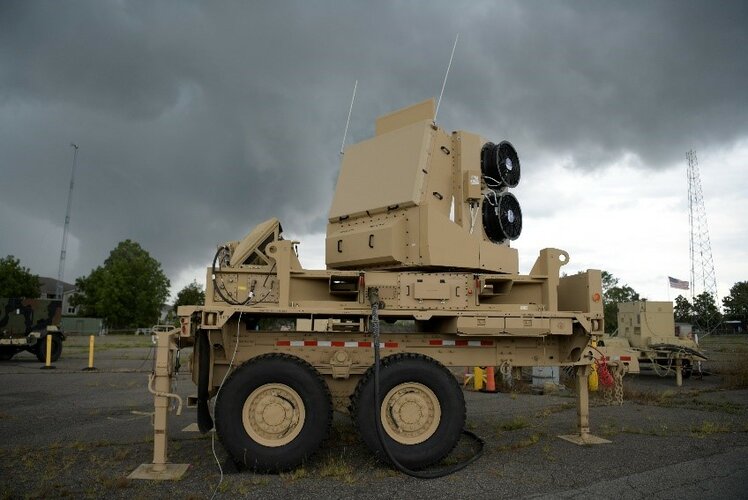
NASA
ACCESS: Confidential
- Joined
- 13 October 2020
- Messages
- 55
- Reaction score
- 138
I spent couple of hours searching for this because I remembered I had seen an illustration of it somewhere before. The Navy did actually consider this long ago but it didn't win, according to JHU/APL, a "boosted THAAD" which is what is shown above was considered for the NTW but it lost out against SM LEAP.Seems like as good of place as any to put this. (It's probably elsewhere on this site but for the life of me don't know what it would be called.) This missile, second from right. Almost looks like it could be a Mk72 booster with a 21" sized second stage (think SM-6 Block IB) and a THAAD KKV. I wonder if the Navy is looking at something like this.
View attachment 664699
Attachments
doug harpel
ACCESS: Restricted
- Joined
- 12 December 2021
- Messages
- 1
- Reaction score
- 2
Looks like the Future Interceptor Program start got pushed a year right. Question is the degree to which the Army really wants the dramatically increased capability or dramatically lower cost per unit. Difficult to get at both.Lower Tier Future Interceptor Program - New start for FY20 -
The Lower Tier Future Interceptor program will provide improved operational effectiveness against evolving air and missile defense threats within the lower tier portion of the ballistic missile defense battlespace. The future interceptor will increase Air and Missile Defense (AMD) capability through increased velocity, altitude and maneuverability. The acquisition program will competitively select a future interceptor to complement existing Air and Missile Defense (AMD) capabilities to overmatch evolving threat.
Similar threads
-
-
FABMS and early versions of SAM D
- Started by uk 75
- Replies: 20
-
Halcon - Argentina's Roland SAM replacement
- Started by batigol
- Replies: 0
-
Thales Lightweight Multirole Missile
- Started by Mercurius Cantabrigiensis
- Replies: 37
-
60s Point Defence Missiles: Mauler and the UK PT 428
- Started by uk 75
- Replies: 4

